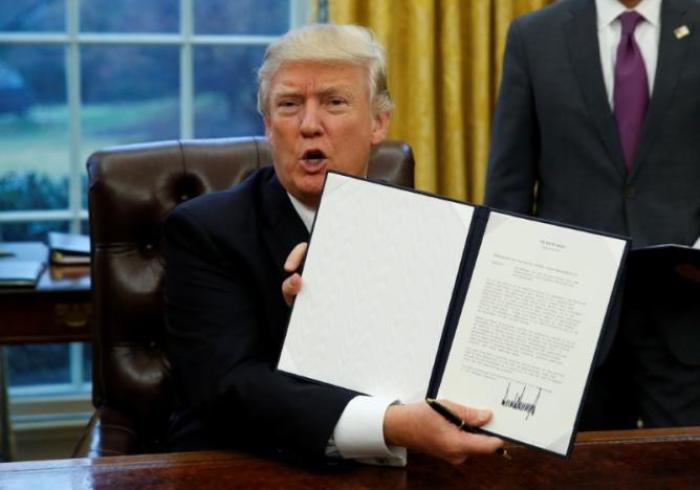What is the Trans-Pacific Partnership? How the US Withdrawal Will Affect Global Trade
The Trans-Pacific Partnership is a trade agreement which was originally signed by 12 countries on February 4, 2016.

The Trans-Pacific Partnership (TPP) was drafted to "promote economic growth; support the creation and retention of jobs; enhance innovation, productivity and competitiveness; raise living standards; reduce poverty in the signatories' countries; and promote transparency, good governance, and enhanced labor and environmental protections," according to a statement released by the executive office of the former U.S. President, Barack Obama.
The 12 Pacific Rim Countries (lands around the rim of the Pacific Ocean) who entered into the agreement last year are Australia, Brunei, Canada, Chile, Japan, Malaysia, Mexico, New Zealand, Peru, Singapore, United States, and Vietnam; Japan is the only country to ratify the deal.
China is the largest Pacific Rim economy to not sign the TPP trade deal. Not content with the investment and trade rules proposed by the agreement, China responded to the deal by accelerating its own trade initiatives in which it proposed a Free Trade Area of the Asia Pacific and backed the Southeast Asian-backed Regional Comprehensive Economic Partnership.
Trans-Pacific Partnership and the U.S.
Former U.S. President Barack Obama was a staunch supporter of the TPP trade deal. The accord was heavily backed by U.S. administration in a bid to usurp China and establish the United States as the economic leader in Asia. But despite it having the backing of U.S. businesses, the trade accord was never approved by Congress.
Donald Trump, who disparaged the TPP deal in his election campaigns, signed an executive order on Monday that formally withdraws the U.S. from the free trade deal, an act which he calls a "great thing for the American worker."
Trump also told union leaders, who are supportive of the decision, during a White House meeting that "we're going to stop the ridiculous trade deals that have taken everybody out of our country and taken companies out of our country, and it's going to be reversed."
Effects of U.S. Leaving the TPP
By withdrawing from the TPP trade deal, the U.S. government has caused major concerns in economically smaller countries like Japan and Vietnam. With the announcement that the U.S. will seek one-on-one trade deals with countries subject to termination in a month "if somebody misbehaves," Trump's decision could plunge the Asia-Pacific region into economic chaos. There is a rising concern that China will capitalize on America's absence to bolster its stance as an economic superpower not only in the Pacific Rim region, but around the world as well.
President Trump on Monday held a meeting with chief executives from companies including Ford Motor Co, Dell Technologies Inc., and Tesla Motors Inc. at the White House. Trump warned the corporations against outsourcing by reiterating his threat of a "very major border tax" on goods imported into the U.S. However, he did assure them of reduced regulations and a sizeable cut in corporate taxes, reports Reuters.
The businessmen who attended the meeting seemed quite confident of Trump's plans and are willing to work with him to achieve a common end.
"I know I come out with a lot of confidence that the president is very, very serious on making sure that the United States economy is going to be strong and have policies - tax, regulatory or trade - to drive that," said Mark Fields, CEO of Ford.
However, this confidence is not being echoed by a good number of investors and businesses around the world. Instability in global markets caused by investor concerns led to a seven-week low drop in the U.S. dollar against the world's major currencies.
Meanwhile, Trump is also working to renegotiate the North American Free Trade Agreement (NAFTA) in favor of the United States. He announced impending meetings with NAFTA partners Mexico and Canada in order to begin the process.





























